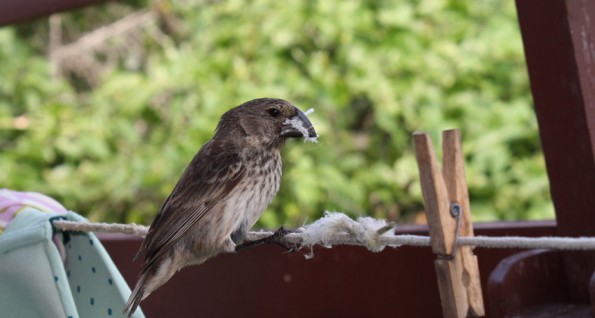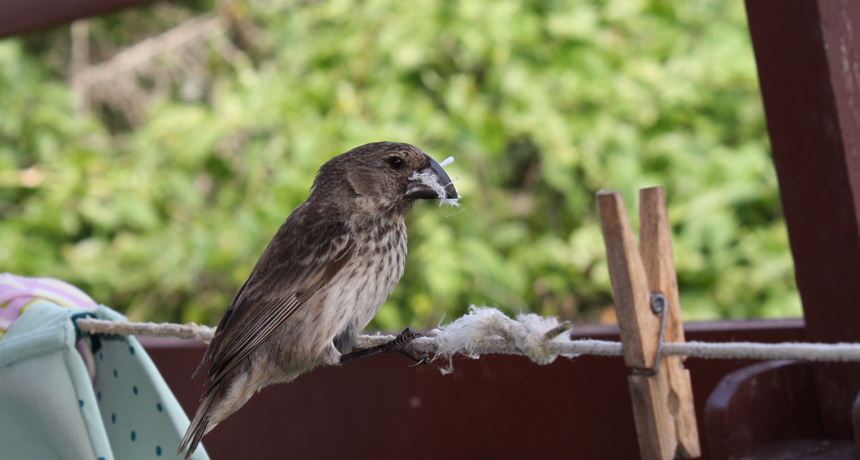
With the list of worldwide endangered species growing longer every day, it is no surprise that the
plight of the mangrove finch—weighing less than a golf ball—has hardly made a blip on most
peoples’ radar. And while this tiny bird’s future may, at first, seem bleak, University of Utah
biologists have discovered an effective conservation method: Help the finches help themselves.
As explained in their study published online in Current Biology on May 5, 2014, biology
professor Dale Clayton and PhD student Sarah Knutie (now a post-doctoral researcher at the
University of South Florida), the mangrove finch is endemic to the Galapagos Islands. It is one
of many finch species observed by naturalist Charles Darwin in the 1830s and credited with
helping him refine his theory of natural selection.
While plentiful in Darwin’s day, in less than 200 years, the population of this bird has rapidly
declined, with fewer than 100 total individuals living in a habitat that has shrunk to the size of
two city blocks. According to Clayton and Knutie, the biggest threat to mangrove finch today is
parasitic nest flies, which attack and kill baby birds. These parasites are found in South
America, the Caribbean, the West Indies, and even Florida, and were only introduced to the
Galapagos by non-native species in the last five decades. “Nest flies hit the finches hard and
fast,” says Knutie. “The Galapagos are isolated, and the birds there just have not had the time
necessary to develop defensive mechanisms to introduced threats.”
Permethrine, the synthetic version of a chemical produced by chrysanthemum flowers, is known
to effectively eliminate parasitic nest flies and is the active ingredient in head lice shampoo and
flea and tick powder, and is even used to treat some outdoor clothing. Until Clayton and Knutie’s
findings were published though, wildlife managers had few options for efficient methods to
control the flies. Human-driven pesticide spraying operations are very labor-intensive and
require the use of climbing equipment to reach mangrove finch nests, which are up to 25 meters
above the ground. Applying permethrine to nests by hand also introduces stress to the birds,
especially since any nestlings must be removed prior to spraying.
While working on a separate project with Clayton at the Darwin Research Station in the
Galapagos, Knutie noted the incorporation of human-produced trash, like “towels, stuffed animal
parts, and toilet paper” in mangrove finch nests. In hopes of encouraging them to use
permethrine-treated cotton in their nests, Knutie set up dispensers specially designed to
attract the birds. The nests containing treated cotton had no living parasitic nest flies in them,
while those containing untreated materials only contained live flies, eggs, and larvae.
Knutie says the self-fumigation method is applicable to any species of bird or animal that uses
human-produced materials in its nest. And while our state’s bird populations are currently
thriving, she encourages Utahns to observe the natural world around them and take note that
sometimes the smallest conservation measures are the most effective.






